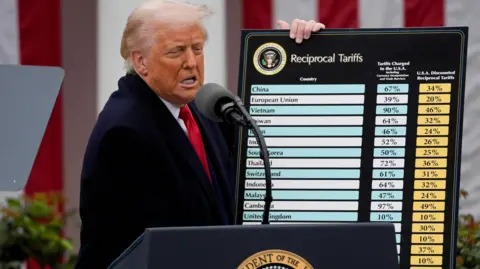Tariffs — taxes or duties imposed by a country on imported goods — are increasingly in the spotlight around the world. They serve as tools for governments to protect domestic industries, adjust trade imbalances, or use as leverage in broader economic or geopolitical negotiations Tariff News. But they also carry risks: they can raise costs for consumers, invite retaliation, and upend supply‑chains.
Key Developments
Here are several important recent updates in the tariff space:
1. U.S.–China trade developments
The Donald Trump administration and China have made notable moves: after high‑level meetings, tariffs on Chinese goods were cut — for example, a particular “fentanyl tariff” was reduced from 20% to 10%. AP News+1
At the same time, the U.S. has extended a tariff “truce” with China, delaying steeper duties for 90 days in order to ease pressure on U.S. retailers ahead of key seasons. Reuters
However, legal challenges are already affecting the tariff framework: A U.S. appeals court ruled that many of the sweeping tariff measures fall outside the president’s authority, raising uncertainty. The Wall Street Journal+1
2. Pakistan’s tariff reform agenda
Locally relevant to you in Pakistan: The government of Pakistan has launched a new National Tariff Policy (2025‑30) aiming to rationalize tariffs, support export growth and reduce the trade deficit. Profit by Pakistan Today+1
Specifically, the plan envisions cutting the number of Customs Duty slabs, lowering the highest tariff rates, phasing out regulatory duties, and simplifying the structure. SAMAA TV+1
Meanwhile, Pakistan agreed with the International Monetary Fund (IMF) to cut the trade‐weighted average tariff from about 10.6% presently to around 6% over five years. Business Standard+1
3. Global implications and trade friction
The broader global picture shows rising tensions: The U.S. has threatened (and in some cases acted on) substantial tariffs on several nations including up to 25‑40% duties in certain instances. Dawn
Countries are responding with worries about competitiveness, export erosion, and being caught in the crossfire of trade policy shifts. For example, Pakistani leaders stated they do not intend to retaliate against U.S. tariffs, choosing a diplomatic route. The Nation+1
Why It Matters: Impacts & Risks
-
For exporters: Lowering tariffs (as in Pakistan’s case) can improve competitiveness, reduce cost of imported inputs, and open access to global supply chains. But abrupt or badly timed cuts may expose domestic industries to foreign competition before they’re ready.
-
For consumers and businesses: Tariffs raise the cost of imported goods, which may lead to price inflation for end‑users. On the flip side, reducing tariffs may lower costs but may also challenge local producers.
-
For government revenue: Tariffs generate customs revenue, but heavy reliance on them can distort trade and dampen growth. Reform must consider alternative revenue sources.
-
For geopolitics/trade relations: Tariffs are not just economic tools—they’re signals. They can provoke retaliation, disrupt supply chains, and affect long‑term trade agreements and alliances.
What to Watch Going Forward
-
Whether Pakistan’s tariff reforms will be implemented on schedule, and how domestic industries respond to increased foreign competition.
-
How U.S. trade policy evolves in light of legal constraints (e.g., the U.S. court ruling on presidential tariff power).
-
Whether other countries follow similar tariff‑reduction agendas, or instead ramp up protectionism as global economic uncertainties mount.
-
The real‑world consumer and business effects of tariff changes — will cost savings or price hikes show up in the next 6‑12 months?
Implications for Pakistan (and you in Hyderabad, Sindh)
-
If Pakistan succeeds in lowering tariffs and simplifying the structure, sectors such as textiles, leather, export‑oriented manufacturing may benefit.
-
On the other hand, local firms that have been protected by high tariffs may face more competition—so a careful transition is key.
-
For imports: Reduced tariffs may bring down cost of imported raw materials, machinery and intermediate goods, which could help manufacturing.
-
For trade with the U.S.: The imposed U.S. tariff of 29% on Pakistani goods (in one recent report) is a concern. The Express Tribune Keeping export markets open will involve diplomatic/trade negotiations.
Conclusion
Tariff news today reflects a major recalibration of global trade policy. Countries like Pakistan are moving toward liberalisation and reform; meanwhile major players such as the U.S. are using tariffs as strategic tools. For businesses and economies, the stakes are high: reforms can stimulate growth, but missteps can lead to disruption, higher costs, and uncertainty. For Pakistan, the current moment offers an opportunity to modernise the tariff regime, boost exports and integrate more deeply into global value chains—if managed well.
